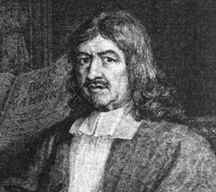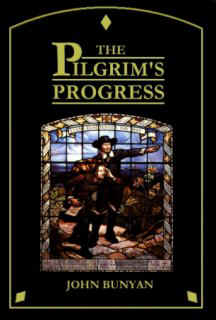¡@
John Bunyan
Pilgrim's Progress (1678)
|
|
To the contemporaries of John Bunyan "The Pilgrim's Progress" was a novel, a fairy tale, and an adventure romance. To a modern reader it is above all an allegory in which the author expands the metaphor of life as a journey to allegorize the life of a Protestant Christian.
The Pilgrim's Progress tells of the flight of a Christian from the City of Destruction. As he is fleeing from home with the burden of his sins upon his back, he falls into the Slough (a deep ditch) of Despond, but frees himself with the assistance of Help, passes through a little wicket-gate, and so begins his journey to the Celestial City. He loses his burden at he Cross, fights with Apollyon in the Valley of Humiliation, is terrified in the Valley of the Shadow of Death, suffers in Vanity Fair, is almost overcome in Doubting Castle by Giant Despair, but at last reaches the Delectable Mountains and the Land of Beulah. He then crosses the River of Death and is received into the Celestial City. In the course of his long journey or pilgrimage, Christian meets Pliable, Mr. Worldly-Wise, Talkative, Lord Hategood, Mr. Facing-both-ways, and others, all allegorical character, but very real.
1. Explain the term allegory and find passages in The Pilgrim's Progress that show up characteristics of allegorical writings. There are many abstract concepts personified as characters in the text; find them and explain their names and roles.
2. At the beginning of The Pilgrim's Progress, Bunyan speaks of a dreamer and a dream figure in an indefinite setting ("a certain place"). Consider how the text alternates between realism (focus on details) and obscurity (undifferentiated vagueness); at what effect may the author be aiming thereby?
3. Throughout the narrative, language is used as gesture or pointer. Frequently words as signs of something that remains unexpressed. What may "Slough of Despond" stand for? Explain Christian's experience in it.
4. What is Vanity Fair? Why do all pilgrims have to pass through it? Who rules it? Explain the pilgrims' experience in " Vanity Fair."
5. What do City of Destruction, wicketgate and Celestial City stand for? How does the rejection of Ignorance at the gate affect the reader? Hoe does it reflect on Protestant Christian?
6. Why is Christian presented as being on a journey called a pilgrimage? Considering John Bunyan's own life, what may be the reason for his choosing the form of a dream for this narrative?
7. What do you think if Bunyan's narrative skill? In trying to answer this question consider his background, his objective in writing this narrative, and his choice of narrative technique.
¡@
The Pilgrim's Progress: Illustration
A Special Presentation of The Pilgrim Progress
Introduction to the Pilgrim's Progress
¡@
¡@
| Medieval Period | 16th Century | 17th Century | Restoration and 18th Century | English Department Homepage |

